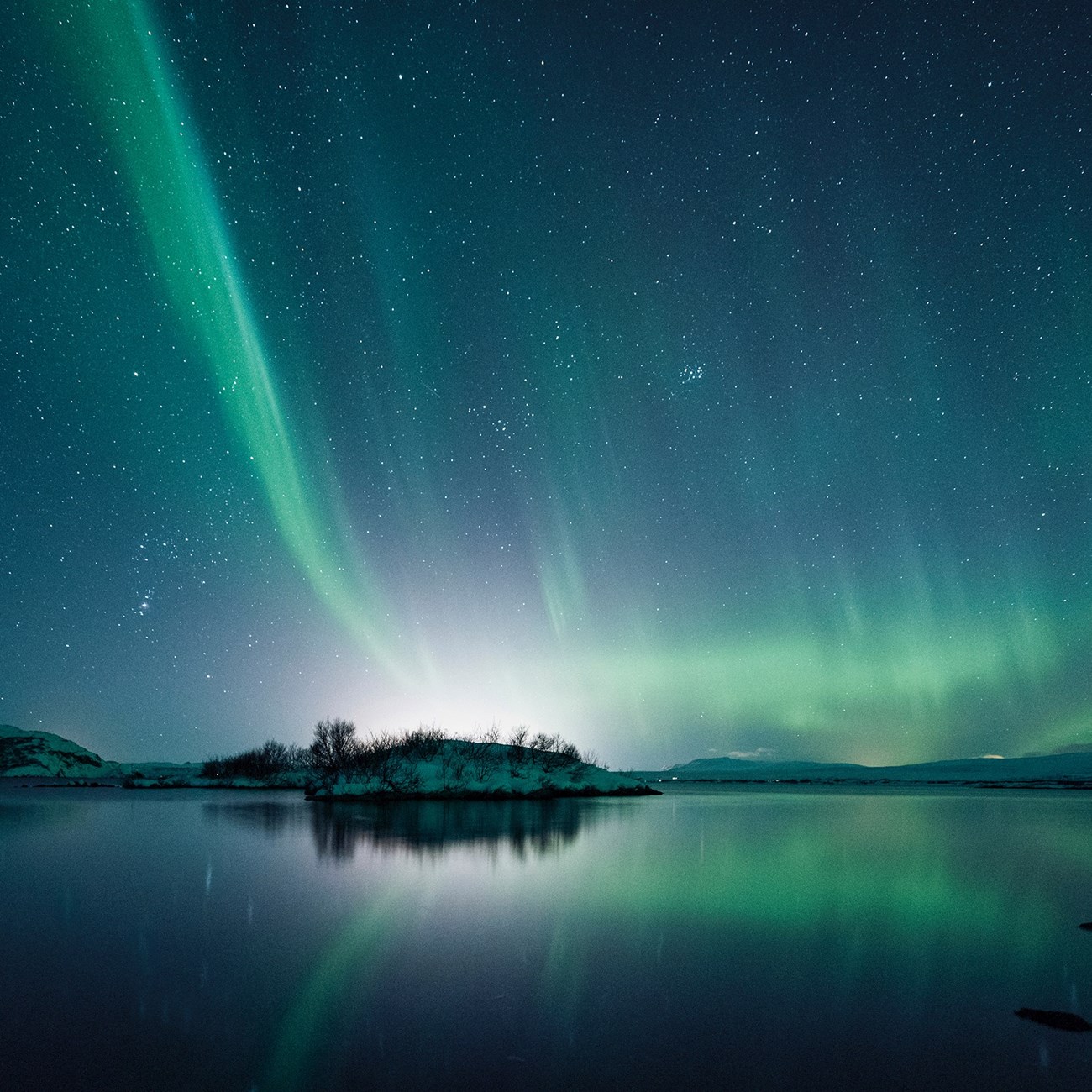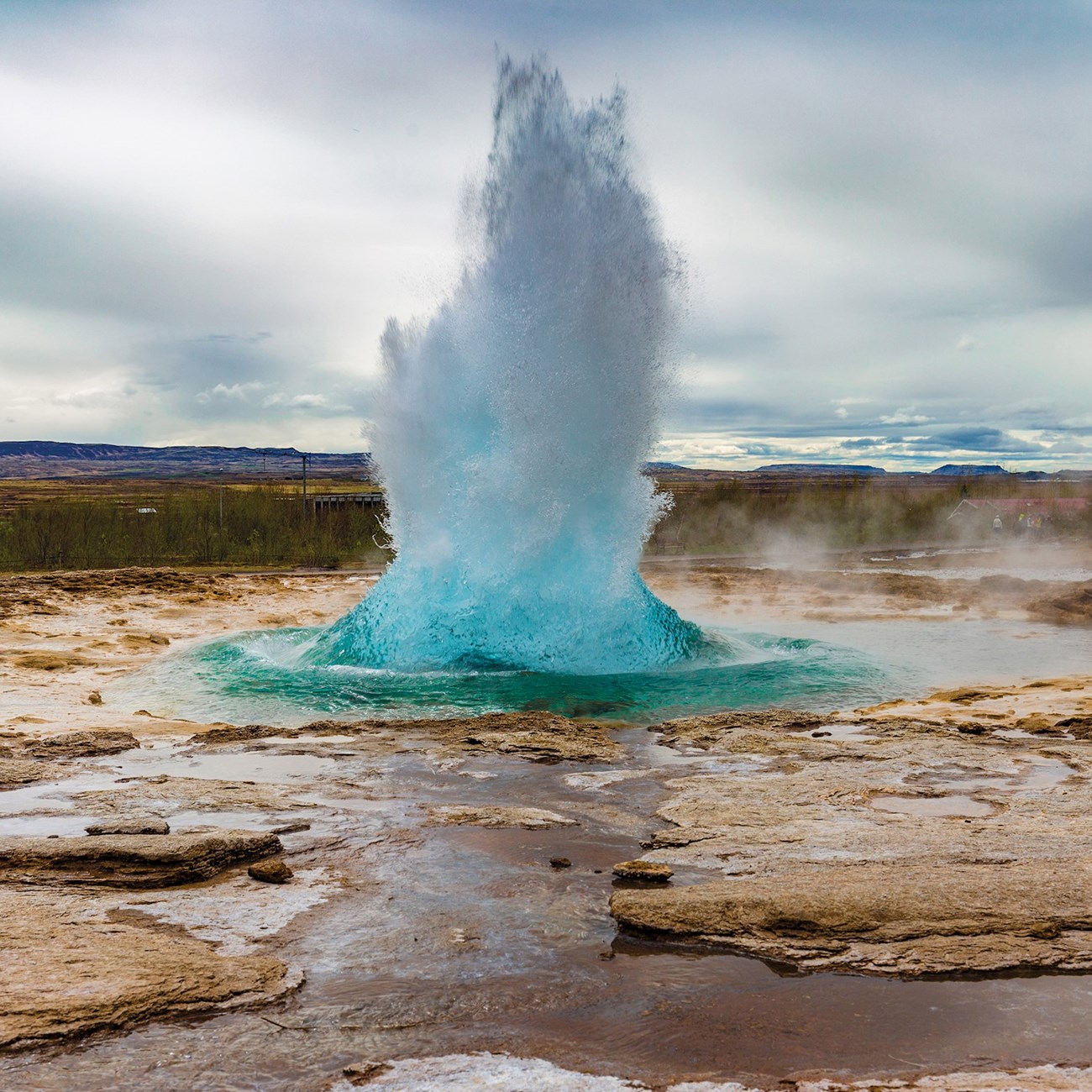Meet Asta Kristrún Ragnarsdóttir: An inspiration to all Icelandic women
Best Time to Visit Iceland
Though many people believe the best time to visit Iceland is linked to the Northern Lights, there’s more to the Land of the Midnight Sun than the auroras (though we’re not denying they’re a magical part of this country).
From revitalizing hot springs to picture-perfect hikes, and even the incomparable wonder of whale watching, there isn’t a one-size-fits-all answer when it comes to the best time to visit Iceland – discover when you’ll get the most out of this unique country below.
What is the best month to go to Iceland?
One of the best months to go to Iceland is also the most popular: June. This is a great month because of the extended – or never-ending – daylight hours. It’s the warmest time of year during midsummer, when the flowers are out in bloom, rivers are flowing and the sun never sets.
However, if you don’t want to jostle with the peak season crowds during the summertime, then shoulder seasons during May and September/October still have many of the benefits while being slightly quieter.
And if the Northern Lights are your main priority you need complete darkness, so summer is a no-no. Between September and March is the best time to visit Iceland to catch the aurora.
Discover more about the best time to visit Iceland below, with guidance for each activity, season, and your questions answered.

Best time to visit for hot springs
Kick back and relax with a visit to Iceland’s famous hot springs, which are open all year round. The most famous hot springs are in the Blue Lagoon, but there are around 50 natural volcanic springs throughout the country, from those surrounded by the hills and fjords to the mountainous ‘hot river’ in Reykjadalur.
With temperatures up to 100°F (38ºC), the hot pots are particularly invigorating during Icelandic winter. With popular sites like the Blue Lagoon, bear in mind during peak season in Iceland it will be busy.
When you travel with Insight Vacations, you won’t need to worry about booking in advance with a visit the Vök Baths built into your itinerary. Experience the age-old Icelandic tradition of bathing in a natural geothermal pool, relaxing in one of the country’s only floating infinity pools, as well as the onshore hotel pools, sauna and cold-water spray tunnel.

Vok Baths, Iceland
Best time to visit for hiking
Winter is a time to avoid if you want to get out and about in nature during your visit to Iceland. Between May and September is the best time to visit Iceland for hiking, when the snowmelt has revealed trails and paths throughout the country, and the rivers and waterfalls are full and flowing. If you’re looking to explore into some of Iceland’s more remote trails it’s best to wait until slightly later in the season to be sure the snow cover has fully melted and all the roads are open.
With Insight Vacations you’ll visit a few magnificent waterfalls: Gullfoss, a spectacular two-tiered waterfall (the Icelandic equivalent of Niagara Falls) that drops a total of 32 metres while spanning the entire width of the Hvítá River; and the majestic south coast waterfalls of Seljalandsfoss and Skógafoss.
Best time to visit for whale watching
Whale watching is one of the wonders of visiting Iceland, and you’ll have your best chances of seeing these magnificent creatures in June and July. The summer sees high numbers of minke whales and dolphins arrive in Reykjavik, while February and March is the best time to see orcas in west Iceland, as they follow herring migrations into the fjords.
You have a wider period of time to see a broader variety of whales and dolphins in northern Iceland – between May and August humpback whales, blue whales, minkes and dolphins come to play. Húsavík, a small town nicknamed the whale watching capital of Europe, is one of the best spots to go if whale watching is your priority, with over 20 whale species visiting its waters. You’ll visit Húsavík while on tour with us, where you’ll have the chance to visit the Húsavík Whale Museum for a guided tour to learn more about whales, their significance in marine ecosystems and the history of whaling in Iceland.
Save up to $3,000* per couple on your first Premium Tour
Plus receive latest offers, travel inspiration, and discover how your travels will make a positive impact. Together, WE MAKE TRAVEL MATTER®. Subscribe NowWhen is Iceland busiest?
Iceland’s busiest months are in the peak summer season, from June to August. Extended daylight hours and warmer weather are ideal for exploring the main sites and natural attractions, almost all of which are open. While the weather is warmest it never gets particularly hot – the average daytime temperature in July is 13 °C (55 °F), though it can (rarely) reach highs of up to 20 °C (68 °F). Midsummer daylight hours in June average around 21 hours of daylight.
To get most of these benefits but travel during a less busy season, visit Iceland in either May or early October. Temperatures average a little cooler between 40-50ºF (though this can vary drastically during a single month, with early May averaging around 2°C (36°F) and late May reaching 11°C (53°F)), with around 15 hours of daylight.

Iceland has over 10,000 waterfalls, many born from glaciers which cover around 11% of the island.
When is the best time to visit Iceland for Northern Lights?
Darkness is key when it comes to seeing the Northern Lights, so we wouldn’t head to Iceland in the summer if this is high on your list.
While seeing the Northern Lights is never guaranteed, the best time to visit Iceland to increase your chances of spotting them is between September and March (In December, it’s common to see barely four hours of daylight). Generally, it’s best to head into more rural areas with reduced light pollution, however on our Scenic Iceland and the Northern Lights tour you can enjoy the spectacle from the capital Reykjavík – there’s something rather spectacular about being in a cosmopolitan city with a spectacular mountain backdrop, watching nature’s unforgettable light show.
What is the cheapest month to go to Iceland?
Iceland is one of the more expensive European countries to visit, but the best time to visit Iceland if you’re on a budget is during the off-season from November to April (excluding the Christmas break in December), when accommodations and flights are cheaper. If you’re feeling prepared for cold weather and limited daylight hours (December gets just 4-5 hours) you can still get a lot out of Iceland in the winter. As previously mentioned, it’s a particularly rewarding time to experience the hot springs, keen hikers can admire the landscapes under snowfall (though not all trails and roads will be open), and the added bonus of seeing the Northern Lights certainly helps.

Between October and March is the best time to see the Northern Lights in Iceland.
What is the temperature of Iceland by month?
With a name like Iceland, it’s unlikely you’re planning on traveling to this Nordic country to catch a tan – even in the summer the temperature rarely reaches more than 68ºF (20ºC) but there are certainly some months that are much, much colder than others. Explore the temperature of Iceland by month below.
Weather in Reykjavik
Reykjavik, Iceland’s capital, experiences relatively mild weather being in the southwest, with mild winters and cooler summers than northern and central part of the country, but it also one of the coldest capitals of any nation in the world.
- January
- Highs: 3.4ºC / 38ºF
- Lows: -2.2ºC / 28ºF
- February
- Highs: 3.4ºC / 38ºF
- Lows: -2.4ºC / 28ºF
- March
- Highs: 4.2ºC / 40ºF
- Lows: -1.8ºC / 29ºF
- April
- Highs: 7.0ºC / 45ºF
- Lows: 0.8ºC / 33ºF
- May
- Highs: 10.1ºC / 50ºF
- Lows: 3.8ºC / 39ºF
- June
- Highs: 13.1ºC / 56ºF
- Lows: 7.1ºC / 45ºF
- July
- Highs: 14.9ºC / 59ºF
- Lows: 9.1ºC / 48ºF
- August
- Highs: 14.2ºC / 58ºF
- Lows: 8.6ºC / 47ºF
- September
- Highs: 11.5ºC / 53ºF
- Lows: 6.0ºC / 43ºF
- October
- Highs: 7.7ºC / 46ºF
- Lows: 2.3ºC / 36ºF
- November
- Highs: 4.9ºC / 41ºF
- Lows: -0.5ºC / 31ºF
- December
- Highs: 3.6ºC / 38ºF
- Lows: -2.0ºC / 28ºF
Weather in Husavik
On the northern coast of Iceland just south of the Arctic Circle, Husavik experiences very cold winters and cool summers while remaining generally dry. However, in the summer the sun remains above the horizon, even at midnight, from 12th to 30th June.
- January
- Highs: 1.8ºC / 35ºF
- Lows: -4.2ºC / 24ºF
- February
- Highs: 1.9ºC / 35ºF
- Lows: -3.7ºC / 25ºF
- March
- Highs: 1.9ºC / 35ºF
- Lows: -4.0ºC / 25ºF
- April
- Highs: 5.8ºC / 42ºF
- Lows: -1.6ºC / 29ºF
- May
- Highs: 9.0ºC / 48ºF
- Lows: 1.9ºC / 35ºF
- June
- Highs: 12.8ºC / 55ºF
- Lows: 5.4ºC / 42ºF
- July
- Highs: 15.2ºC / 59ºF
- Lows: 7.2ºC / 45ºF
- August
- Highs: 13.5ºC / 56ºF
- Lows: 6.9ºC / 44ºF
- September
- Highs: 10ºC / 50ºF
- Lows: 3.8ºC / 39ºF
- October
- Highs: 6.4ºC / 44ºF
- Lows: 1.0ºC / 34ºF
- November
- Highs: 3.1ºC / 38ºF
- Lows: -2.3ºC / 28ºF
- December
- Highs: 2.0ºC / 36ºF
- Lows: -4.0ºC / 25ºF
Discover the wonders of Iceland on our premium Iceland guided tour.

LIKED THIS POST? SHARE WITH YOUR COMMUNITY





